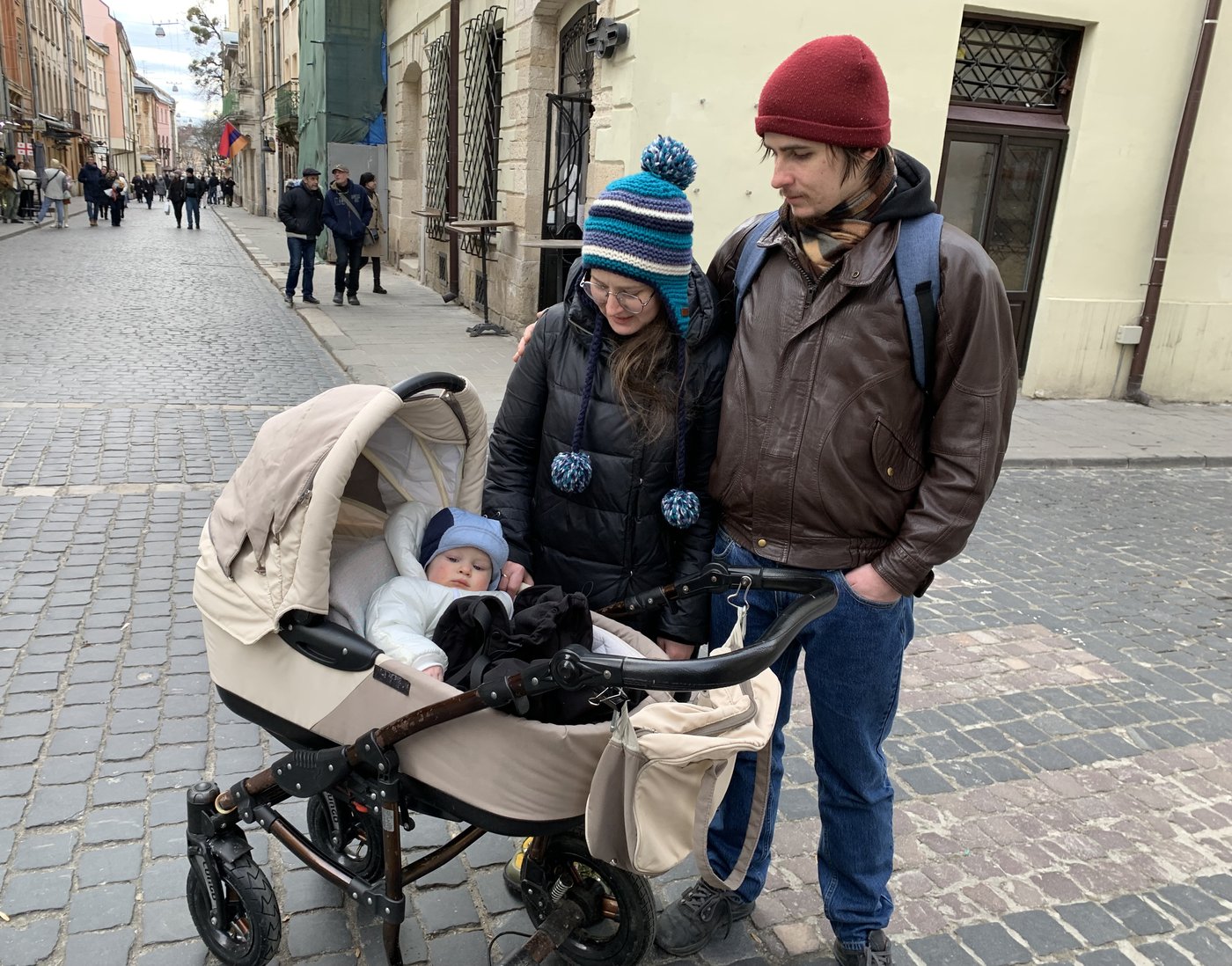Olena Boiko recalls being in a state of shock when nurses began to wheel her on a gurney toward the basement bomb shelter while she was in labour to give birth to her first child.
She was seven months pregnant when Russia began its brutal invasion of Ukraine, causing families in Boiko’s town of Lviv in the western region of the country to live under the constant threat of missile attacks.
Unsure of where to go, Boiko and her husband, Volodymyr, retreated to the countryside. They soon realized they were no safer there than in the city. They opted to return to Lviv for the birth, assured by her doctors that she would be able to have her baby in the bomb shelter if necessary.
“We were shocked, but we didn’t have a choice,” Boiko said in Ukrainian through a translator, while pushing her son, Yaroslav, now 10 months old, in his stroller through Lviv on Saturday.
Midwives in Ukraine want women facing labour during the war to be offered that choice of where to give birth.
They are looking to Canada as an example of how to make it happen.
In a large wooden chalet tucked away in a remote village in the Carpathian Mountains in Ukraine, a group of about 30 midwives gathered around Ottawa midwife Betty-Anne Daviss on Friday as she explained how to deliver babies outside of the hospital and how the practice is regulated in Canada.
It was the first training provided by the Ukrainian Association of Midwives, which was officially formed late last year at the urging of Daviss.
Midwives are regulated in Ukraine, but only in hospitals. They are not licensed to attend home births.
That has left them to make difficult decisions about what to do when women cannot, or will not, go to the hospital.
“There was a category of women who called and asked me to come and assist them with birth at their homes or in a bomb shelter (because) a rocket can hit a medical facility,” Svitlana Rudchenko, a midwife from the county’s capital city Kyiv, said in Ukrainian.
“There were also women who were very anxious, did not want to go beyond their comfort zone, and were afraid to go to the clinic.”
Anastasia Menzhynska, the midwife who heads the new association, said she’s had to deliver babies in bomb shelters, and even coach women in occupied territories through their labour online.
The problem is, Menzhynska said, midwives aren’t just lacking permission to do home births. They also do not have the training to deliver babies outside of hospital.
That’s why Daviss has travelled back and forth between Canada and Ukraine several times since the war began to teach them.
Daviss, who has previously travelled to Guatemala and Afghanistan, has trained the Ukrainian midwives on what to do in cases of postpartum hemorrhage. She has also taught them how to proceed when the baby is not in a good position for birth, if its shoulder gets stuck, or the mother is having twins, and how to resuscitate an infant that is not breathing.
“We had seen that people are having births in bomb shelters and subway stations and I thought they really need to get themselves organized,” Daviss said in an interview in one of the chalet’s cosy rooms.
Daviss is also teaching them skills of a more political nature, like how to lobby their government to grant them more leeway and offer more professional recognition for their work.
“They have always been in the system so they don’t want to do it outside the system. They want it to be legal and they want it to be safe and they want it to be well integrated,” she said.
She told the group how Canadian midwives fought for regulation in Ontario 30 years ago.
Since then, the number of midwives in Canada has jumped from roughly 60 in 1994 to 1,700 in 2019 as more provinces followed Ontario’s lead, according to a 2019 article by Kathi Wilson, an assistant professor in the department of midwifery at McMaster University in Hamilton.
Boiko said she would not have chosen a home birth for herself, as she prefers the medical security of the hospital.
“Of course, if there are regular shellings, and there is nowhere to be except one’s basement, then the midwife should be with the woman,” she said through a translator.
Daviss said that might be enough to open the doors for women who would prefer a home birth.
“Where there’s war, that’s when categories are going to change,” she said.
“That’s when people are going to start to think outside the box.”
This report by The Canadian Press was first published Feb. 20, 2023.
